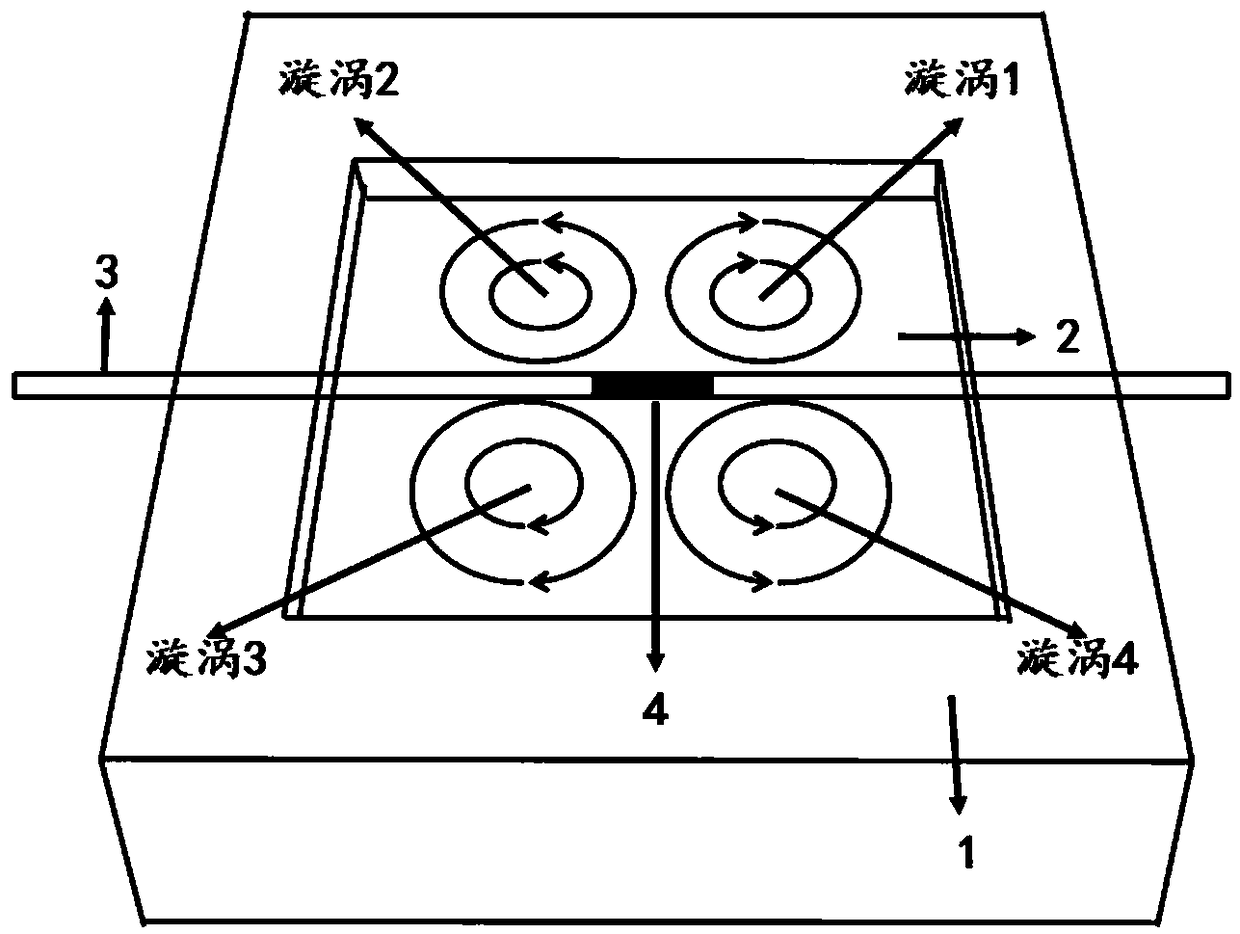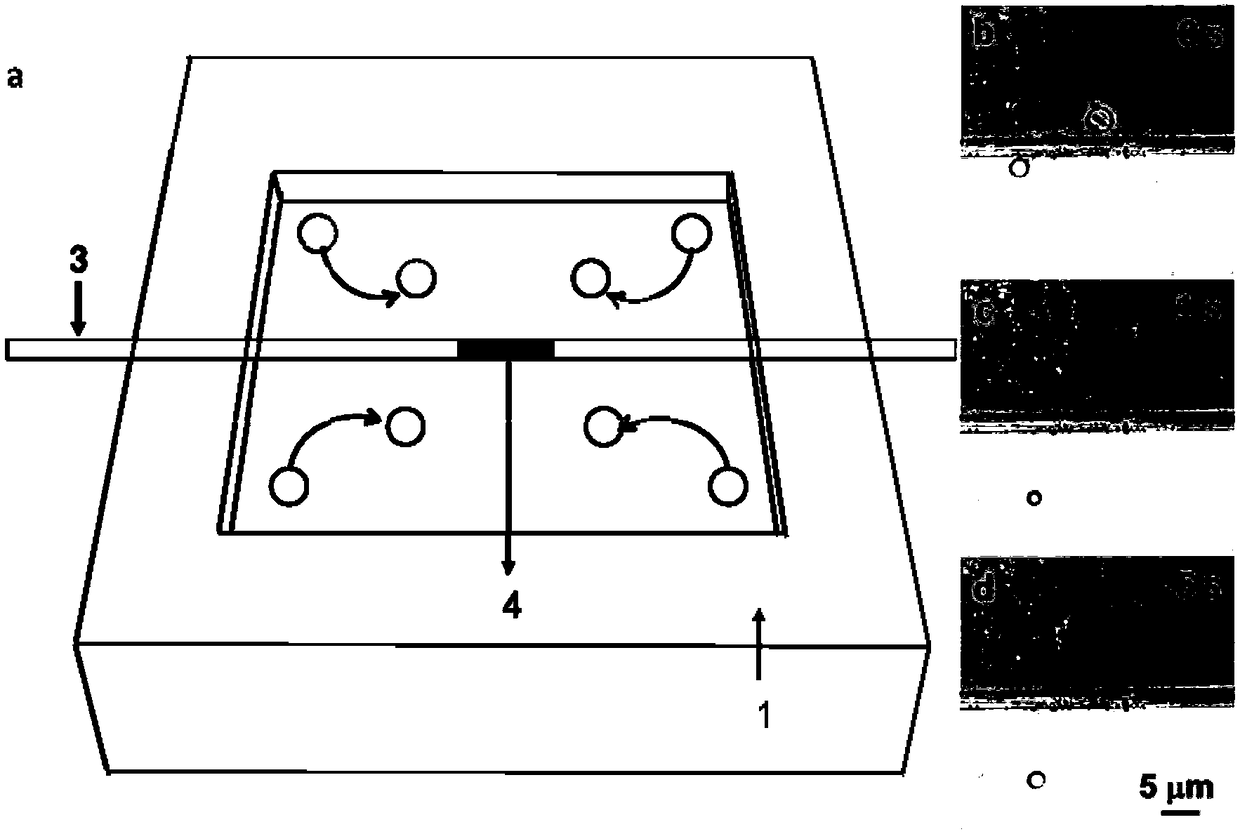Material distributed control platform and control method based on optical flow vortex array
A technology of distributed control and control methods, applied in chemical instruments and methods, laboratory containers, laboratory stools/laboratory benches, etc., can solve problems such as limited scope of action and distributed capture of difficult materials, and achieve application Wide range of occasions, low cost and simple system architecture
- Summary
- Abstract
- Description
- Claims
- Application Information
AI Technical Summary
Problems solved by technology
Method used
Image
Examples
Embodiment 1
[0057] This embodiment shows a distributed optical flow capture technology based on an optical flow vortex array. Such as image 3 As shown in a, the micro-nano material near the vortex will be affected by two forces. The first force is viscous force, whose direction is along the direction of the vortex flow, and the second force is the lift force, whose direction is perpendicular to the direction of the vortex flow and points to the vortex center. Under the action of viscous force and lift force, the micro-nano material will enter the center of the vortex in a spiral trajectory. Therefore, the center of the vortex can act as a stable point for trapping material. Maglani convection can provide four vortex centers, which means that four trapping positions can be provided, thus realizing the distributed trapping technology based on the optical flow vortex array. image 3 b-d show the overall process of vortex 1 and vortex 3 trapping two polystyrene microspheres respectively. ...
Embodiment 2
[0059] This embodiment shows the optical flow manipulation technique by tuning the power of the light source. Such as Figure 4 As shown in a, as the light input power increases, the photothermal heat source on the surface of the microfluid absorbs more light energy, releases more heat energy, and the temperature also increases. In the process, the microfluidics spread the thermal energy farther away, resulting in a wider and faster Marangoni convection. The increased range of convection affects the movement of the vortex center, which eventually guides the captured material away from the photothermal heat source. Conversely, the reduction of power can also guide the capture material closer to the photothermal heat source. Figure 4 b-d shows the experimental process of optical flow manipulation by tuning the light source power. Under the input power of 10mW, two polystyrene microspheres were captured by vortex 2 and vortex 4 respectively and stopped at the center of the vo...
Embodiment 3
[0061] This embodiment shows the optical flow manipulation technique by tuning the position of the photothermal heat source. Such as Figure 5 As shown in (a), under the control of the fine-tuning frame, the photothermal heat source moves from the old position to the new position on the microfluidic surface. The disappearance of the photothermal heat source at the old position leads to the disappearance of Marangoni convection, while the new position is due to the The appearance of photothermal heat source leads to the emergence of Marangoni convection. During this process, the center of the vortex also moves from the old position to the new position, eventually guiding the trapped material from the old position to the new position. Figure 5 (b)-(d) show the experimental process of optical flow manipulation by tuning the position of the photothermal heat source. At t=0s, under the input power of 10mW, four polystyrene microspheres were captured by vortex 1-4 respectively an...
PUM
 Login to View More
Login to View More Abstract
Description
Claims
Application Information
 Login to View More
Login to View More - R&D
- Intellectual Property
- Life Sciences
- Materials
- Tech Scout
- Unparalleled Data Quality
- Higher Quality Content
- 60% Fewer Hallucinations
Browse by: Latest US Patents, China's latest patents, Technical Efficacy Thesaurus, Application Domain, Technology Topic, Popular Technical Reports.
© 2025 PatSnap. All rights reserved.Legal|Privacy policy|Modern Slavery Act Transparency Statement|Sitemap|About US| Contact US: help@patsnap.com



